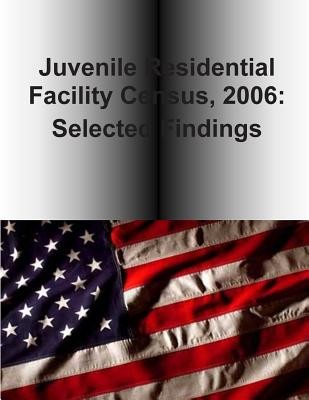
- We will send in 10–14 business days.
- Author: U S Department of Justice
- Publisher: CreateSpace Independent Publishing Platform
- Year: 2015
- Pages: 24
- ISBN-10: 1507577966
- ISBN-13: 9781507577967
- Format: 21.6 x 27.9 x 0.1 cm, minkšti viršeliai
- Language: English
- SAVE -10% with code: EXTRA
Juvenile Residential Facility Census, 2006 (e-book) (used book) | bookbook.eu
Reviews
Description
The Office of Juvenile Justice and Delinquency Prevention (OJJDP) developed the biannual Juvenile Residential Facility Census (JRFC) to collect information about the facilities in which juvenile offenders are held. Facilities provide information about characteristics such as their size, structure, type, ownership, and security arrangements. They also describe the range of services they provide to youth in their care-including education, physical health, mental health, and substance abuse services. JRFC also reports the number of juveniles who died in custody over the past 12 months. This Bulletin presents findings from the 2006 JRFC-findings that are generally positive.JRFC data indicate that the population of juvenile offenders in custody continued to decline- down 3% from 2004, a trend that may be explained by the decline in juvenile arrests. Although crowding is still a problem in many facilities, improvements continue. The proportion of residents held in facilities that were at or above the limit of their standard bed capacity dropped from 40% in 2000 to 31% in 2006. In 2006, 4% of facilities (holding 11% of juvenile offenders in custody) exceeded their standard bed capacity or had juveniles sleeping in makeshift beds.JRFC alternates with its companion study, the biannual Census of Juveniles in Residential Placement, which describes the characteristics of youth in custody. In pursuing these data collection efforts, OJJDP supports the vital role of corrections in maintaining the safety of the community and providing essential services to confined youth.
- Author: U S Department of Justice
- Publisher: CreateSpace Independent Publishing Platform
- Year: 2015
- Pages: 24
- ISBN-10: 1507577966
- ISBN-13: 9781507577967
- Format: 21.6 x 27.9 x 0.1 cm, minkšti viršeliai
- Language: English English
The Office of Juvenile Justice and Delinquency Prevention (OJJDP) developed the biannual Juvenile Residential Facility Census (JRFC) to collect information about the facilities in which juvenile offenders are held. Facilities provide information about characteristics such as their size, structure, type, ownership, and security arrangements. They also describe the range of services they provide to youth in their care-including education, physical health, mental health, and substance abuse services. JRFC also reports the number of juveniles who died in custody over the past 12 months. This Bulletin presents findings from the 2006 JRFC-findings that are generally positive.JRFC data indicate that the population of juvenile offenders in custody continued to decline- down 3% from 2004, a trend that may be explained by the decline in juvenile arrests. Although crowding is still a problem in many facilities, improvements continue. The proportion of residents held in facilities that were at or above the limit of their standard bed capacity dropped from 40% in 2000 to 31% in 2006. In 2006, 4% of facilities (holding 11% of juvenile offenders in custody) exceeded their standard bed capacity or had juveniles sleeping in makeshift beds.JRFC alternates with its companion study, the biannual Census of Juveniles in Residential Placement, which describes the characteristics of youth in custody. In pursuing these data collection efforts, OJJDP supports the vital role of corrections in maintaining the safety of the community and providing essential services to confined youth.


Reviews